Show me the money
Hello again, stranger. Somehow several months have passed since the last Whally update. I would like to blame this on viruses or fires or a sabbatical. The actual reason is that it turns out billing software is tricky and apparently requires unlimited amounts of time to develop. Whally has nevertheless learned how to do many things involving invoices, billing cycles, discounts, and payment methods that I'll share below.
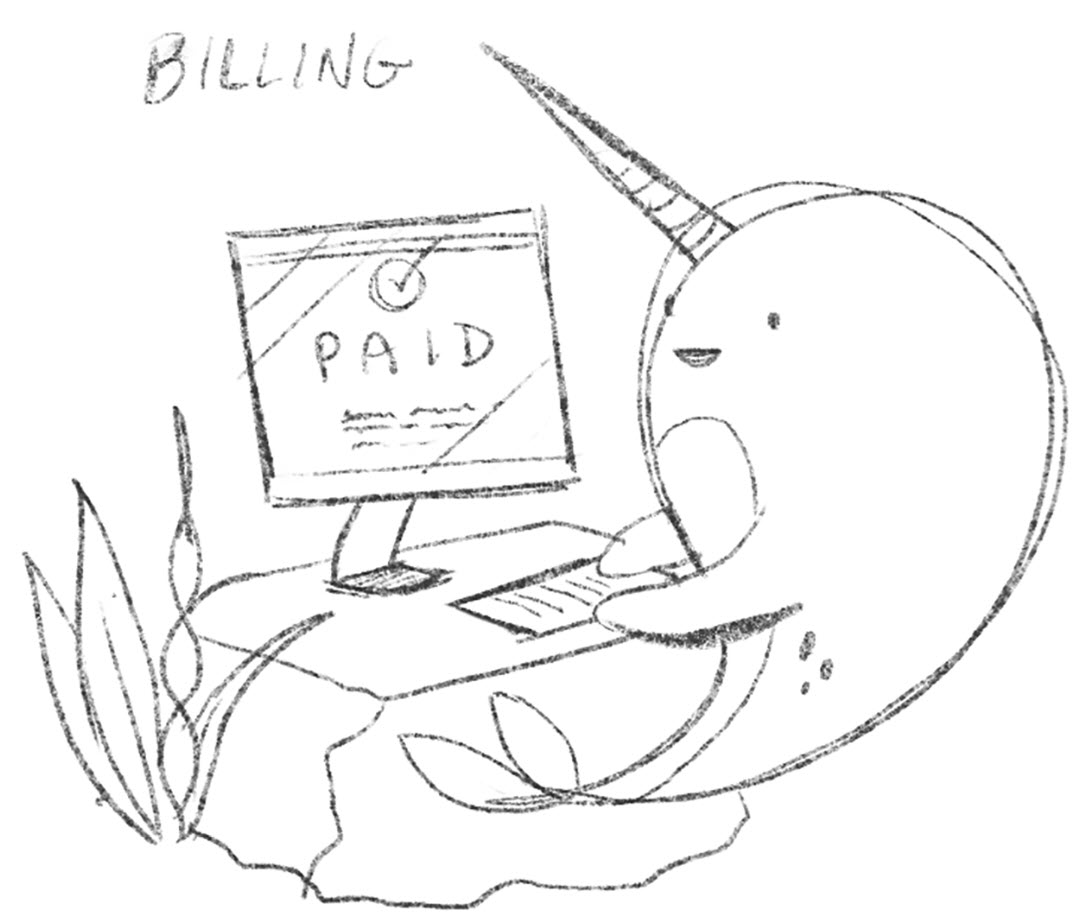
By the way, the subject "show me the money" is of course a reference to the film Jerry McGuire, which is somehow already 24 years old. It was fun to watch again, but be warned: not only are there scenes with unclothed people in locker rooms, those people stand barely 2-3 feet from one another and aren't even wearing masks! On the plus side, it features several well-known actors, but this was the real star:

With an adorable lisp, he displays trivia knowledge like: "did you know the human head weighth 8 poundths?" Of course, if the movie were remade now, that would have to be changed to something like "did you know quarantineths last 14 dayths?"
Anyway, the point is that Whally now allows schools to shout "show me the money!!!" in the polite form of a fully automated, flexible, self-service billing platform that removes the hassle of collecting tuition. Read on for highlights.
What's on offer?
The first thing one might want to do with billing is decide what is for sale. This could be monthly tuition, one-time events, supplemental program fees, or anything else that "monetizes your business", as they say. Whally calls these "Offerings".
In listing your offerings, you can define them with any recurrence (one-time, monthly, every 3 days, etc) and any number of prices. Most things might have a single standard price, but others can have many tiers or levels that can be selected from when setting up a billing plan. An example:
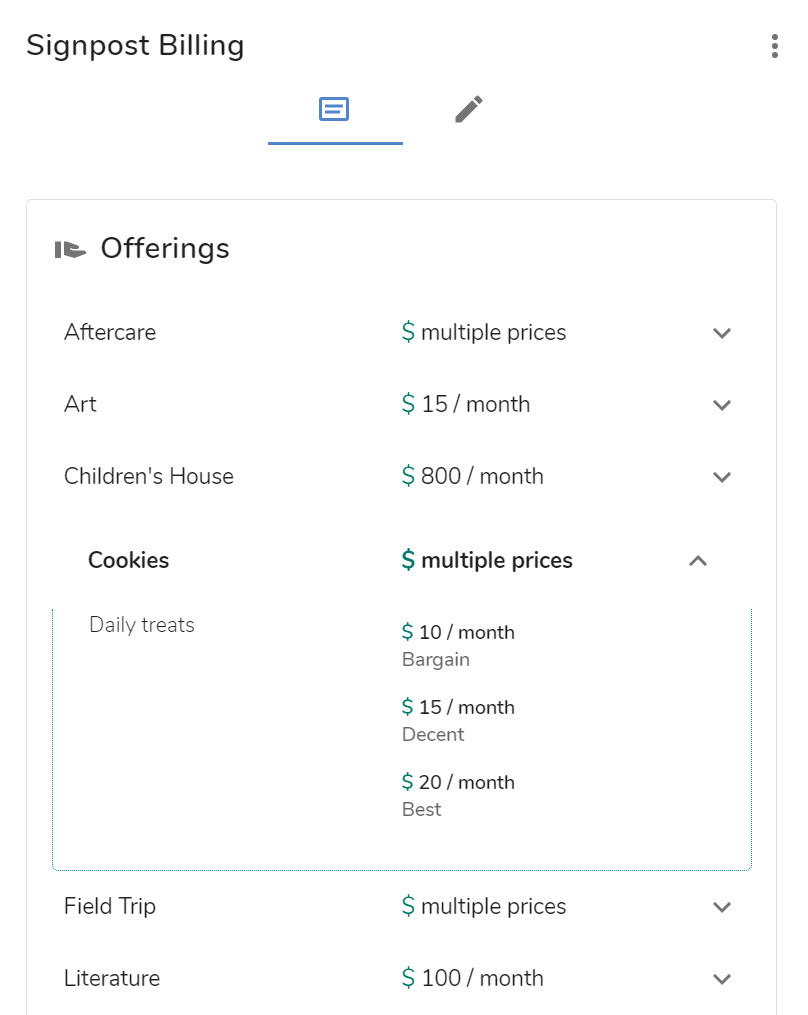
These offerings, along with discounts and other settings, can be used for either a single school location or multiple locations as the situation warrants. Speaking of discounts...
Discounts: when the price isn't right
Discounts, when you think about it, are a bit of a contradiction. Giving a discount is simultaneously the most effective way to convince a customer to spend their money, and the most effective way to prevent you as the business from receiving that money. Contradiction or not, discounts remain wildly popular. And just one isn't enough. It turns out that schools and parents want to mix and match so many discounts that each bill could be given to the children as extra math homework.
Whally is here to help. Discounts can be crafted and applied in all kinds of creative ways:
- Fixed amounts or percentages
- Specific value or adjustable range
- Applied per-item
- Combine any number of discounts
- Calculate effect by simple addition or applying discounts in succession
- Limit which offerings a discount can be applied to, or allow it universally
An example:
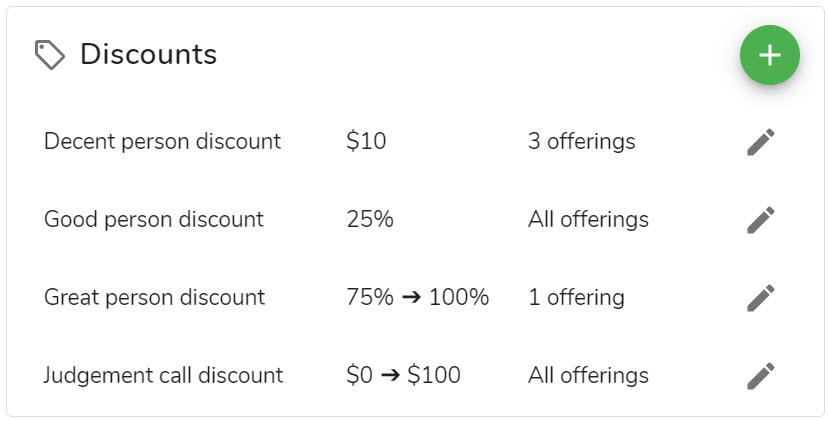
The invoice description appears on the parent's invoice. If we want to allow adjustment:
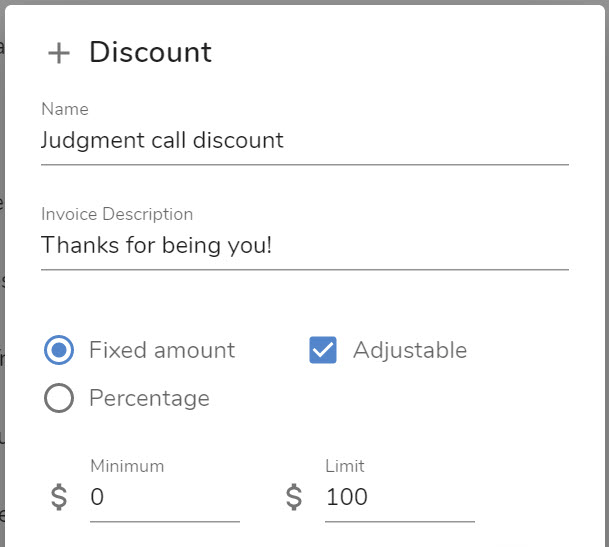
Billing plans: the payoff
At this point, you might be thinking "umm I could do this in Excel in about 5 minutes". And I would cry "but it took 4 months to make these screens!" Feedback accepted, nonetheless. However! The Billing Plan is where this all gets more interesting.
What is a billing plan? That's where offerings, discounts, and payers come together to define who is paying for what regarding a child's enrollment. For instance:
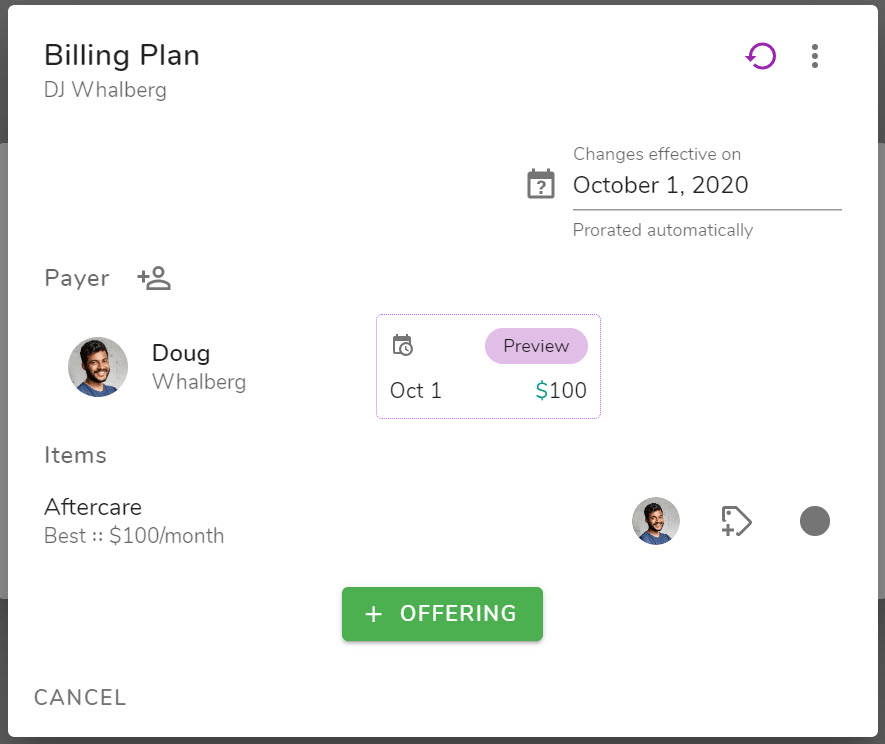
This is the billing plan for our favorite student, DJ. In this simple case, he is enrolled only in our best aftercare program and Doug is paying $100/mo, which is the previewed total for Doug's upcoming invoice on Oct 1. Simple enough.
Discounts can be applied to each item. Let's consider Doug a good person and reward him accordingly:
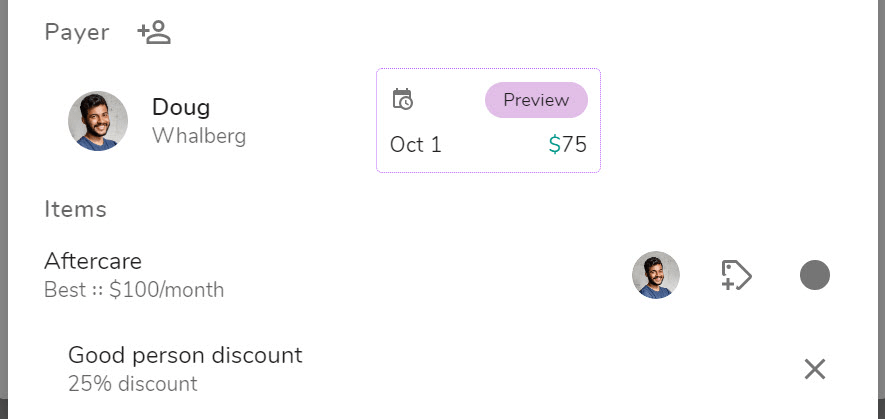
With the discount, the next bill is reduced to $75. A nifty feature of the billing plan is that all changes result in an immediate preview of the effects of the change, to show you exactly what the next invoice will look like. This is done before anything is actually saved, so you can notice the mistake and bail. Nobody needs to know ;).
Also, prorations. The only thing more complicated than discounts is prorating discounts. Whally automatically calculates prorated amounts depending on when changes are made and adds notes on the invoice with explanations.
Opening our current preview:
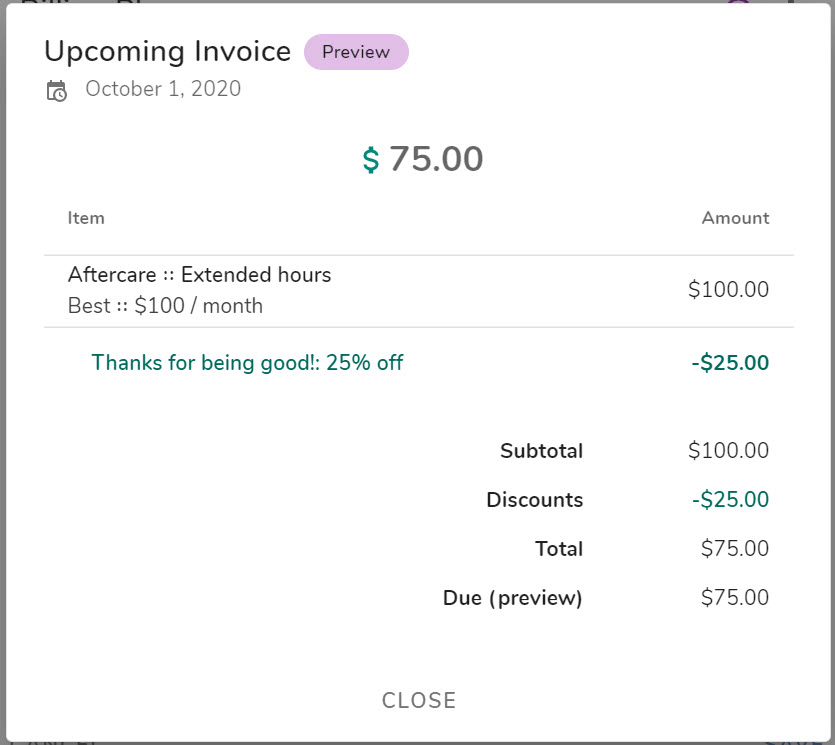
Math looks OK? Let's add something nutritious to the plan:
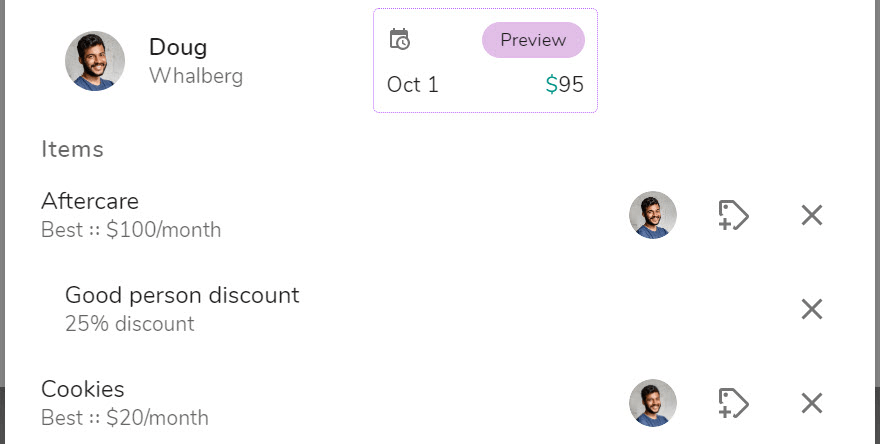
Since the previous discount only applies to aftercare, the full $20 cost of cookies brings Doug up to $95.
Sharing is caring: multiple payers
But these are modern times, and the Whalbergs are a modern family. Can we split the cost between mom and dad? Fortunately, Whally allows splitting a billing plan between any number of people willing to share the cost. This could be mom and dad, or any other extended family or communal scheme. For now, let's add Janice and have her pay for the cookies:
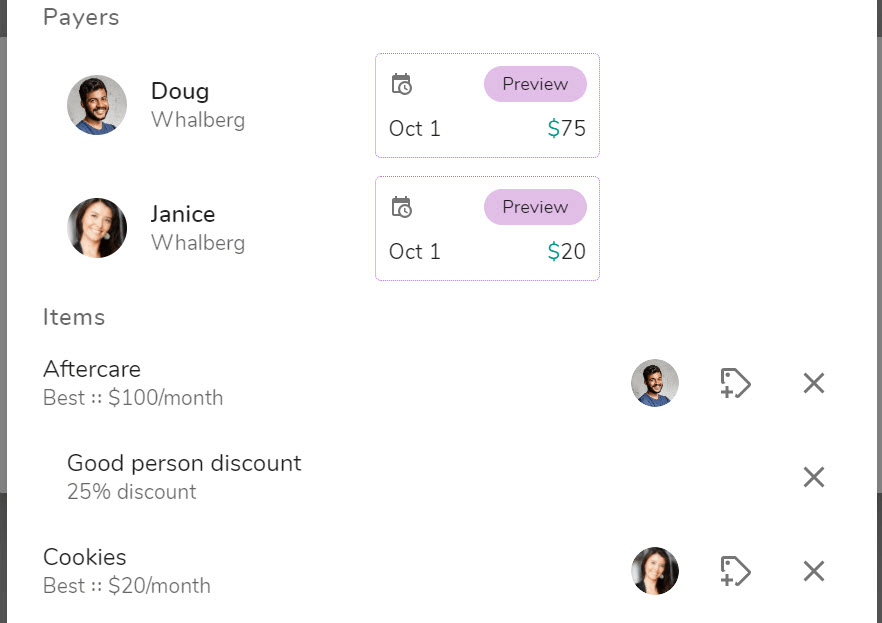
Now we see Janice as a "payer" with her own invoice for her own share of the cost. This represents the fact that billing will be truly separate: each will receive separate invoices with separate items and amounts, billed to separate bank accounts or cards. They won't even see the other's goodness discount -- awkward conversation avoided!
Uncle Jose also wants to chip in. Let's add him and see item splitting, which allows dividing the cost of an individual item between any of the payers:
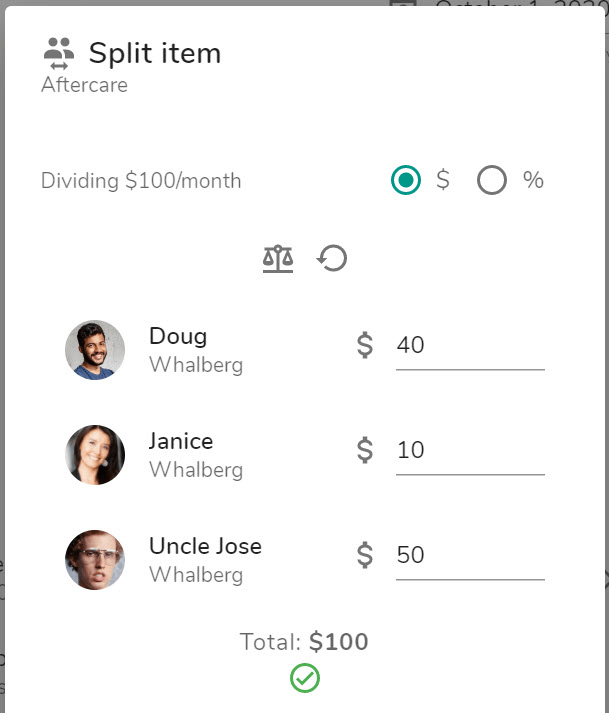
Fancy! Items can be split any which way by dollars or percentages, with only one rule: all shares add up to the full cost. What about discounts? These are automatically shared proportionally between the payers based on their share of the item. No need to break out the calculator.
Uncle Jose will see this:
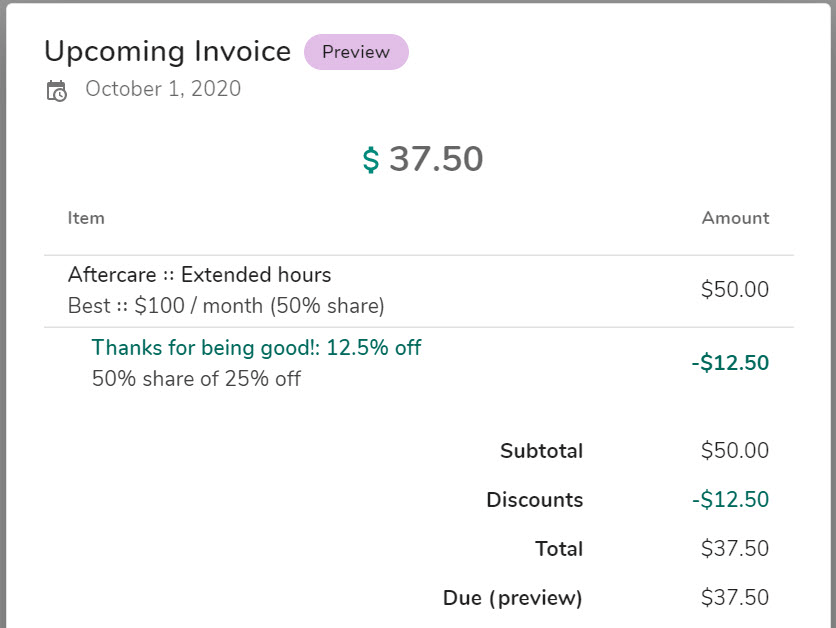
Jose gets half the cost of aftercare and receives half the discount. Whether he correctly inherited a good person discount is a separate question.
All of this all in action:
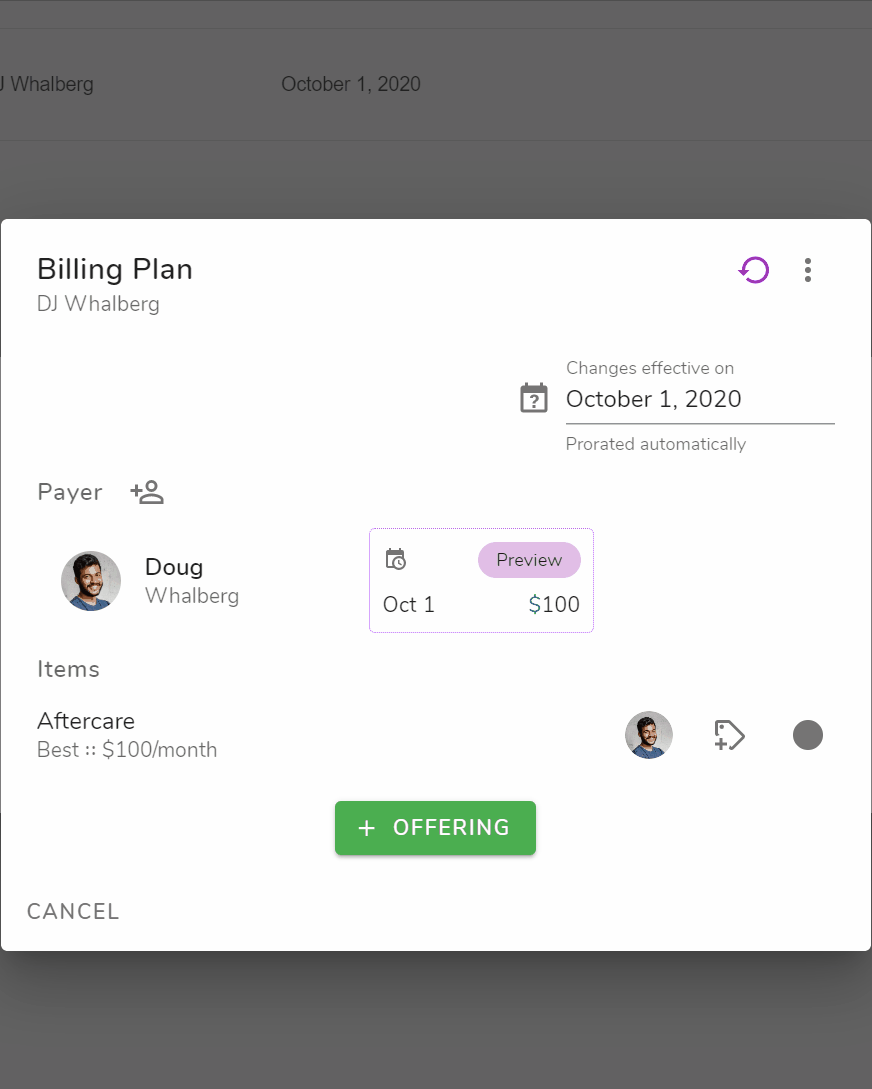
Can you do that in Excel?
All the above was from the perspective of the school administrator. The parents also have their own view of payment-related concerns. Currently, this includes the two obvious necessities: payment methods and full payment history, including a preview of the next invoice. We already know what the invoices look like, because they are the same shown to the admin who created the plan.
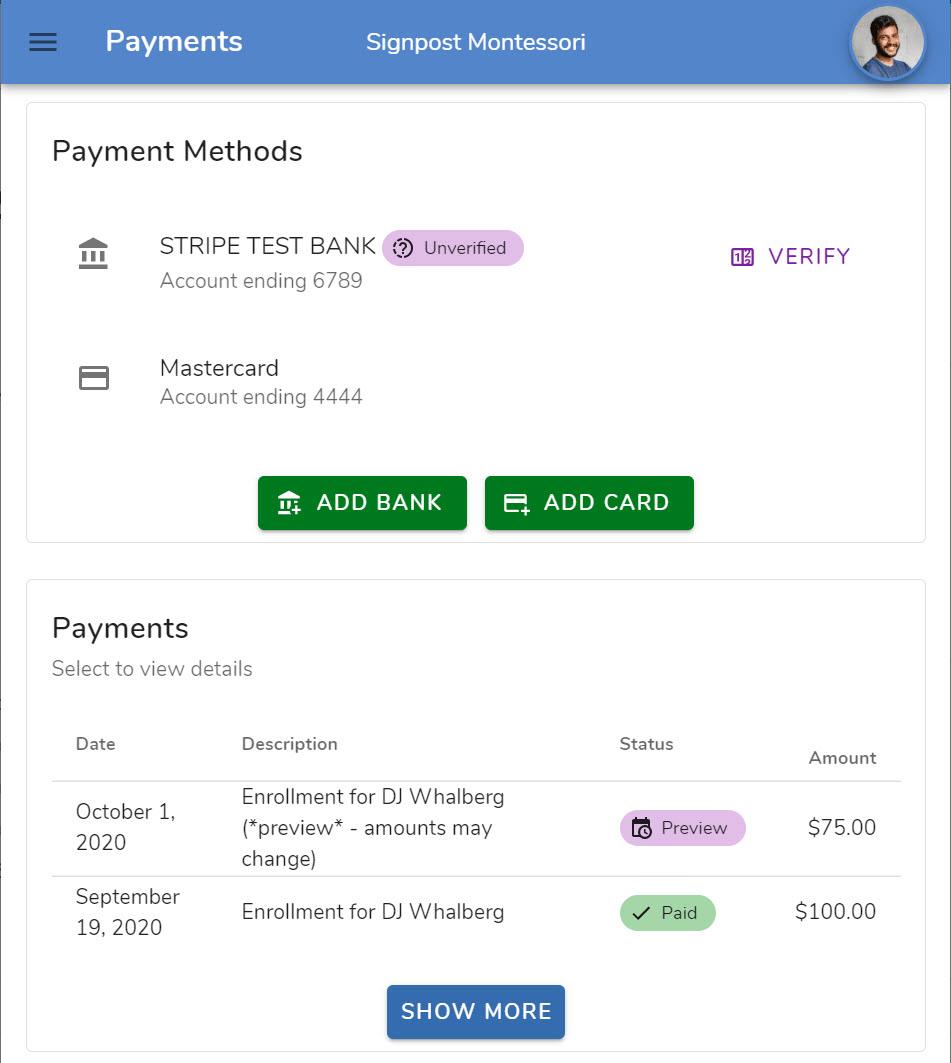
Here parents can set up their own account information, which can be a variety of types, including US or international bank accounts, debit cards, and credit cards. All added accounts are verified either instantly or within days -- no more manually typing a parent's account/routing number and hoping for the best on billing day.
Collecting the money
How does the money actually transfer? That's where the hamsters come in. Just kidding, it's all Stripe underneath. That means reliable autopay initiated within seconds after midnight on the first of the month, or whenever the billing cycle runs. Any failures are automatically retried and notifications raised for follow-up. Once collected, revenues are automatically transferred out to the school's bank.
Finally, for the bookkeepers and accounting professionals of the world, Whally will provide super-clean exports of all billing data either as files or from the Whally API, making continuous integrations possible for reconciliation into your favorite accounting platform.
**
That's quite enough about billing, I think you'd agree. I hope it was worth every penny, with your good person discount of course. What's next for Whally? Now that many of the features are ready in first form, the next focus will be on creating a live Whally that can actually be used by real people.